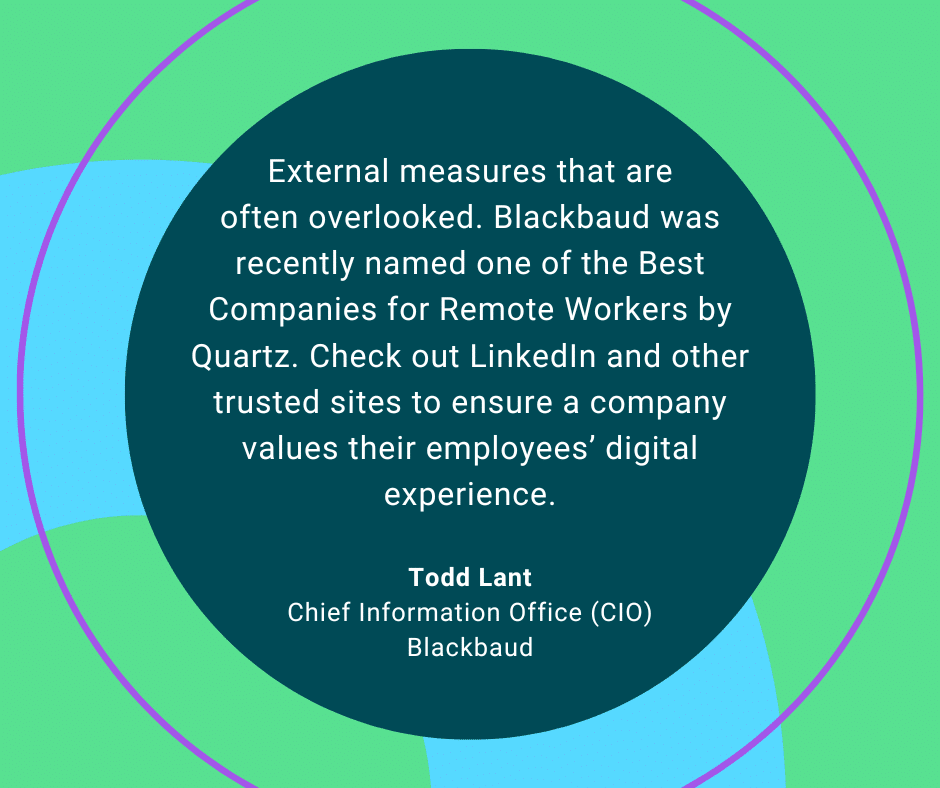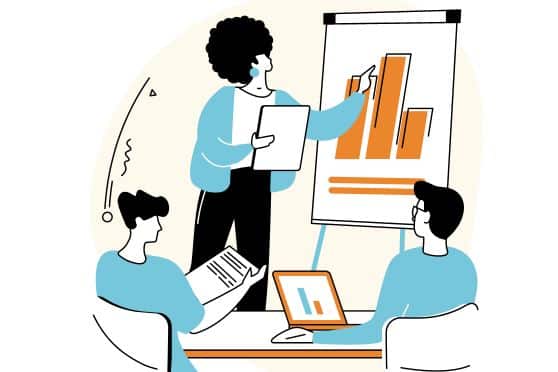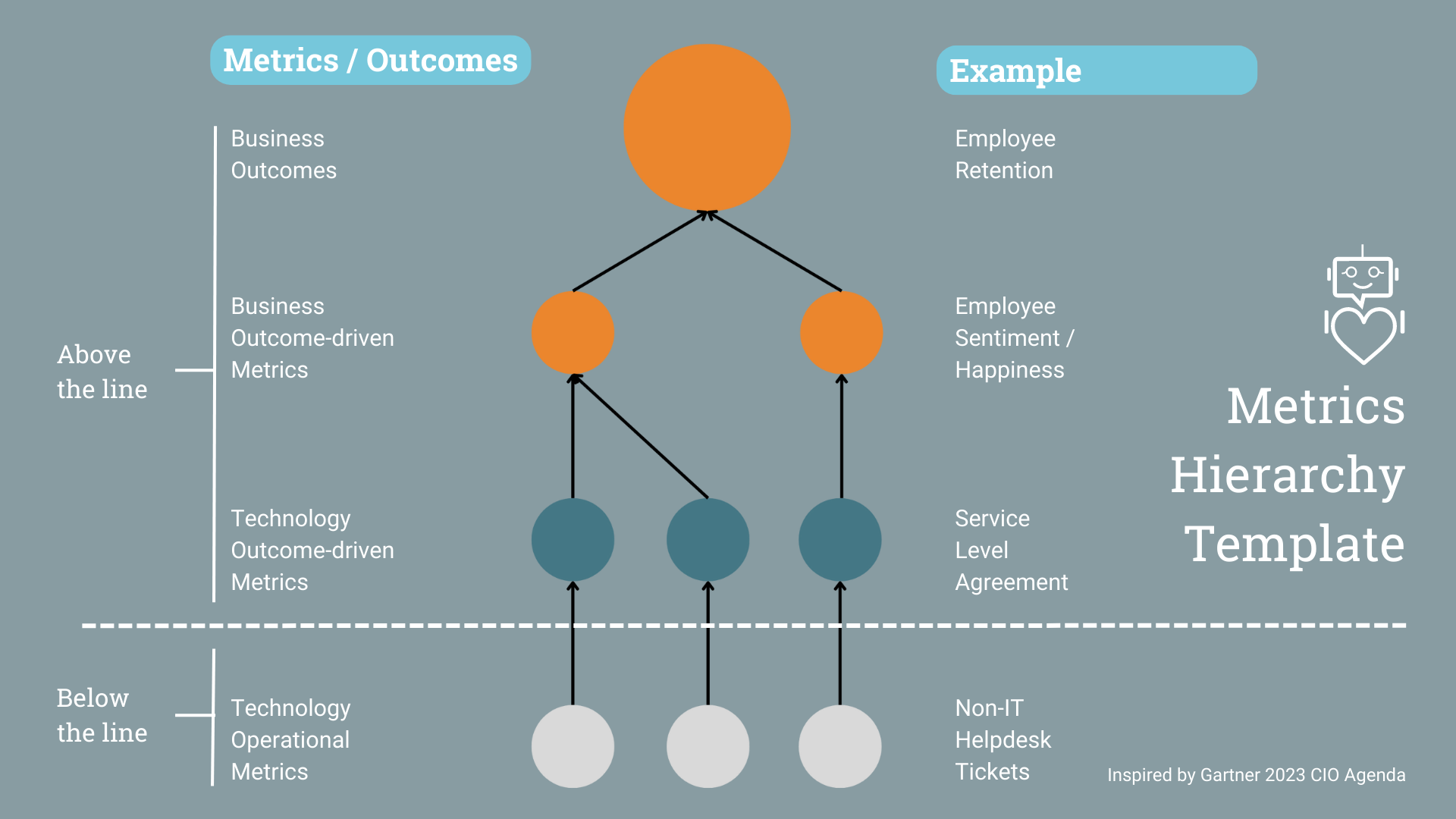In Chapter 1 of three, I introduced the blueprint of the Digital Employee Experience (DEX), the intersection of technology, culture, and the in-person workplace. Now, it’s time to address just who is part of the digital employee experience ownership team?
Most industry experts agree that the Chief People Officer (CPO) often owns and supports the Employee Experience, while the Chief Information Officer (CIO) designs the digital workplace experience. We live and work in the innovation economy, where the adoption of hybrid work continues to gain momentum coming out of the pandemic. Technology permeates the employee’s first and last interaction each day, shifting the core employee experience within companies from in-person to digital.
With this shift, companies must embrace designing for the digital employee experience (DEX). Just as companies strive to provide exceptional customer experiences, they too must provide that same level of consumer-grade employee experience. Frictionless digital interactions need to be user-friendly, to engage with and seamless inside the daily workflows. Continuous and agile digital workplace strategies are needed and must be executed with a design-thinking mindset. DEX equips companies to achieve digital transformation in an employee-first, streamlined, and integrated way that drives business outcomes.
CIOs, with their expertise in technology and internal information systems, are uniquely positioned to drive digital employee experience ownership. By focusing on the digital employee experience, CIOs can create a digital workplace that fosters loyalty, productivity, and long-term commitment from employees.
Understanding the Digital Employee Experience
In the realm of employee experience, DEX refers to the collective interaction between employees and the digital tools, systems, and technologies used. It encompasses various aspects, such as the usability of software applications, access to information and resources, and the overall digital environment employees encounter while performing their tasks. It can streamline processes, foster collaboration, and provide employees with the necessary tools and resources to perform their jobs efficiently. A positive digital experience provides a sense of belonging and empowerment, as employees feel valued and supported by their organization. As a result, DEX increases worker commitment and loyalty to the company. Moreover, the digital employee experience directly impacts customer experiences and outcomes. Engaged and satisfied employees are likelier to deliver exceptional customer service and contribute innovative ideas. Positive interactions between employees and customers increase customer satisfaction and loyalty while improving business outcomes.
The Focus of the CIO, as a Digital Employee Experience Owner
HR plays a vital role in shaping the digital experience. But it’s the CIO who provides the technological infrastructure and tools that enable a seamless digital experience for employees while driving business outcomes. In speaking with numerous CIOs, they unanimously stated that designing a successful DEX framework starts with the company and product strategy.
One of the key responsibilities of the CIO is to establish a robust and scalable digital infrastructure. This infrastructure should support the company’s current and future strategy while accommodating rapid technological advancements. It involves optimizing network connectivity, maintaining server reliability, and implementing effective data storage and backup solutions. A well-designed digital infrastructure lays the foundation for a smooth DEX, minimizing downtime and frustration caused by technical glitches.
The CIO’s IT team focuses on providing user-friendly business operations tools and technologies that empower employees to perform their tasks efficiently. These operational tools include intuitive software applications, easy-to-navigate user interfaces, and self-service portals. By simplifying complex processes and reducing the learning curve associated with digital tools, IT enables employees to maximize the benefits of technology in their daily work.
Prompt and efficient technical support is crucial for maintaining a positive user experience. The IT department should establish mechanisms for employees to quickly report and resolve technical issues. Whether through a dedicated help desk, online ticketing system, or chatbot support, providing timely assistance helps minimize disruptions. It makes sure employees can rely on digital infrastructure to perform their tasks effectively.
The Role of HR, as a Digital Employee Experience Collaborator
One of the primary customers for CIOs is the Human Resources (HR) department. HR understands the employees’ needs, expectations, and pain points. By leveraging this understanding, the CIO can implement tailored digital experiences catering to different roles, departments, and individual preferences. This personalization can range from customized dashboards and role-specific applications to personalized training programs and resources.
In my discussions with CIOs, they mentioned it is easy to fall into the tech trap of only focusing on the technical aspects of DEX. They mentioned that after understanding the business and product strategy, the next focus is understanding employee experience strategy. It is easy for the CIO to think employee experience is only company culture tangibles, like perks, total rewards, and benefits. By partnering with the Chief People Officer, a CIO can learn about the employee life cycle / journey and all digital touch points along the path. CIOs also cautioned that it is important to know the workforce demographics and composition (from hourly, salaried, contractors, or vendors to geographic locations). These different employee types interact and collaborate within the digital workplace differently.
Managers & Team Leaders, as Influencers of DEX
Managers and team leaders are instrumental in shaping their teams’ digital employee experience. As frontline supervisors, they support employees during digital transformation initiatives and create a conducive environment for a positive DEX. One aspect of their role is to provide guidance and support to employees navigating digital tools and systems. By demonstrating knowledge and confidence in using digital tools, managers can inspire and encourage their team members to embrace the digital workplace enthusiastically. Managers who foster a digital collaboration culture offer their teams numerous opportunities to better collaborate, share knowledge, and work together virtually and in-person. Thus, promoting a sense of camaraderihttps://www.mebebot.com/blueprint-for-digital-employee-experience/e and inclusiveness. Additionally, Managers can create an environment that nurtures employee digital growth and development.

Mindy Honcoop, People / Talent Leader for companies like TCP Software, Care.com.
Digital Employee Experience Optimization Opportunities
While CIOs strive to deliver a positive digital employee experience, here are key optimization opportunities to consider.
- Balancing technology with human interaction. While digital tools and automation offer numerous benefits, organizations must balance the convenience of technology and the need for human interaction. Organizations should carefully evaluate when and where human interaction is necessary to complement the digital experience, making sure that employees feel supported and valued.
- Privacy and data security concerns. It is imperative to establish robust data protection measures. Clear data usage, consent, and security policies must be in place to alleviate employee and customer concerns and maintain trust in the digital workplace. Regular communication and transparency regarding data handling practices help create a secure and compliant digital environment.
- Changing employee and customer expectations. As technology evolves rapidly, employee and customer expectations regarding digital tools and experiences are also continually changing. Organizations must stay attuned to these expectations and proactively seek feedback to identify areas for improvement. By embracing a culture of innovation and agility, organizations can adapt their digital strategies to meet expectations and stay ahead of the curve. Think about investing in employee surveys, focus groups, or time in department meetings to gather feedback. By actively involve employees in the decision-making process, a sense of ownership and engagement is fostered.
- Lack of training and support. Employees need adequate training to use digital tools and overcome any obstacles. CIOs should prioritize developing training programs that provide employees with the knowledge and resources to leverage digital tools efficiently. These programs should not only cover initial onboarding but also provide ongoing training and resources to help employees continuously develop their digital skills. A robust support system, such as a workplace digital assistant, provides employees a support environment that is 24/7 and in their time zone.
- Siloed communication and collaboration. Organizations often need help facilitating seamless communication and collaboration across teams and departments. By streamlining the communication and collaboration experience, CIOs encourage employees to connect, share information, and collaborate effortlessly. Have you looked into the latest video conferencing or project management tools? All of which break down silos and enhance overall productivity.
- Difficulties maintaining well-being. Promoting employee well-being and work-life balance is important. The digital workplace often blurs the boundaries between work and personal life, making it crucial to establish guidelines and practices that support employees’ well-being. Employees increasingly also expect employers to address this gap in well-being with digital solutions. Employers that encourage regular breaks, flexible work hours, and clear expectations regarding after-hours availability will decrease burnout.
- Identify accurate ways to measure success. In my CIO conversations, measurement was an area of shared importance. If the right metrics are identified, companies remain focused on what is important. Be outcome-based to help attribute changes to impact. CIOs can employ several key metrics and go beyond consumption metrics like employee sentiment surveys, active users, feature usage, or logins. A concrete objective is to find metrics closely linking company strategy with performance behavior. Think about productivity and efficiency metrics: output per employee, time spent on tasks, number of cross-functional projects, communication frequency, or usage of collaborative platforms. Plus, do not forget to measure completion rates, skill acquisition, or performance improvement attributed to your investment in employe growth and development.
- Clarify roles and responsibilities for DEX. According to Gartner 2023 CIO Agenda research, key-stakeholder management is essential. It starts when CIOs create a shared understanding of the goals and outcomes of the digital employee experience. Additionally, setting up governance structures, such as steering committees or working groups, can help facilitate cross-functional collaboration and decision-making. Regular communication and engagement with stakeholders, including HR, IT, operations, and business leaders, is also essential. By involving cross-functional stakeholders in the planning, implementation, and evaluation of the digital employee experience, CIOs create a sense of shared ownership.
Small Changes. Big Impact.
For example, Todd also noted how DEX improved their onboarding experience after reviewing feedback from new hires. In the past, they had sent digital onboarding equipment (laptop, accessories, and backpack) in three separate boxes with paper instructions. Now, the Blackbaud First Day Box is a high impact experience for the top talent they are hiring. It arrives at a new employees’ doorstep with an updated backpack filled with company swag, a QR code with all needed instructions, and the tech kit appropriate for their role, building the excitement for their first day. With these small changes, employee sentiment about the technology and consumption of the instructions increased. They felt like the company cared. This is a reminder that changes don’t need to be drastic. Subtle things can have a big impact.

The digital employee experience (DEX) has become a critical aspect of organizational success. Crafting and nurturing a positive DEX requires collaboration and effort from various stakeholders. HR, IT, managers, and employees all play unique roles in shaping the now and future of work and DEX strategies drive measurable results to improve overall operational efficiencies to positively impact the overall company success.
If you missed chapter 1: The Blueprint for Digital Employee Experience, check it out here.

